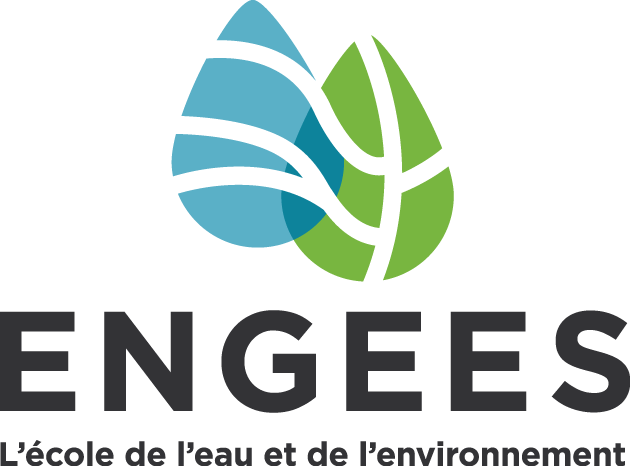

Summary
Research topics in “Fluvial chronometers” globally aim to reconstruct the Quaternary evolution of selected fluvial systems and to better understand the complex interactions between tectonics and climate (and man-induced impact on shorter timescales) that drive their evolution through time. At the crossroads of fluvial geomorphology and Quaternary geochronology, we focus on:
- river systems of various sizes and located in different geomorphological settings (e.g. Rhine vs alpine catchments);
- complementary fluvial archives, mostly fluvial terraces but also cave-deposited alluvium (see interactions with “Caves, Karst and Human Origin”).
Thanks to long-lasting collaborations with dedicated laboratories (e.g. CEREGE/ASTER) and scientific experts, the most usual dating methods are threefold: in situ cosmogenic nuclides, luminescence (OSL/IRSL) and electron spin resonance (ESR). Fluvial chronometers primarily involve physical geographers within the LIVE (UMR 7362).
Selected research aims
- (1) Multi-method approaches to date terrace sequences from large fluvial systems in northern Europe (i.e. Meuse, Rhine and Moselle);
- (2) Morpho-sedimentary dynamics of the Vosges Mountains tackled through (i) catchment-wide denudation rates (10Be and 26Al); (ii) dating of intra-massif sedimentary infills and (iii) modern fluvial dynamics;
- (3) Exploring the potential of luminescence, including via the portable reader, as a tracer of past and current fluvial morpho-sedimentary dynamics.
Selected research projects
- (1) SEDIVOSGES – 2020-2024 – Morpho-sedimentary dynamics of the Vosges Mountains (NE France) (Coordination: LIVE; Funding: Région grand-Est, ENGEES, Agence Eau Rhin-Meuse, Syndicat de Rivières Haute-Alsace)
- (2) QUARTZ – 2022-2025 – A multi-method approach for quartz characterisation in alluvial sediments for source-to-sink tracing and dosimetry(Alpes, Massif Central, Vosges) (Coordination BRGM; Funding: Projet ANR)
- (3) BRUCHE – 2019-2022 – Development of a geochronological approach to constrain river lateral mobility (Coordination LIVE; Funding: ENGEES)
- (4) ESRHINE – 2021-2022 – Dating of fluvial terraces along the Middle Rhine Valley via ESR (Coordination: University Of Lausanne; Funding: IPERION HS)
Selected scientific publications (chronological order from 2024-17)
- Rizza M., Rixhon, G., Valla, P.G., Gairoard, S., Delanghe, D., Fleury, J., Tal, M., Groleau, S., Revisiting a proof of concept in quartz-OSL bleaching processes using sands from a modern-day river (the Séveraisse, French Alps). Accepted in Quaternary Geochronology.
- Jautzy, T.,Rixhon, G., Braucher, R., Delunel, R., Valla, P.G., Schmitt, L., Aster Team, 2024. Cosmogenic (un-)steadiness revealed by paired-nuclide catchment-wide denudation rates in the formerly half-glaciated Vosges Mountains (NE France). Earth and Planetary Science Letters, 625, 118490. doi.org/10.1016/j.epsl.2023.118490
- Rixhon, G., 2023. Deeper underground: Cosmogenic burial dating of cave-deposited alluvium to reconstruct long-term fluvial landscape evolution. Earth-Science Reviews, 239, doi.org/ 10.1016/j.earscirev.2023.104357
- Rixhon, G.,2022. A question of time: historical overview and modern thought on quaternary dating methods to produce fluvial chronologies. Quaternaire, 33, 75-98.
- Jautzy, T., Schmitt, L., Rixhon, G., 2022. Historical geomorphological adjustments of an Upper Rhine sub-tributary over the two last centuries the Lower Bruche (Alsace, France).Géomorphologie, Relief, Processus et Environnement, 28, 53-72.
- Cordier, S., Kalicki, T., Lauer, T., Rixhon, G., Van Balen, R., 2021. Twenty-five years of FLAG activity: concepts, foci, trends in research. Geomorphology, 373, 1-7.
- Duval, M., Arnold, L., Rixhon, G., 2020. Electron spin resonance (ESR) dating in Quaternary studies: evolution, recent advances and applications. Quaternary International, 556, 1-10
- Jautzy, T., Herrault, P. A., Chardon, V., Schmitt, L., Rixhon, G., 2020. Measuring river planform changes from remotely sensed data–a Monte Carlo approach to assessing the impact of spatially variable error. Earth Surface Dynamics, 8, 471-484.
- Rixhon, G., Braucher, R., Bourlès, D., Peeters, A., Demoulin, A., Leanni, L., ASTER Team, 2020. Plio-Quaternary landscape evolution in the uplifted Ardennes: new insights from 26Al/10Be data from cave-deposited alluvium (Meuse catchment, E Belgium). Geomorphology,371, 1-13.
- Bartz, M., Arnold, L.J., Spooner, N., Demuro, M., Lozano, I.C., Rixhon, G., Brückner, H., Duval, M, 2019. First experimental evaluation of the alpha efficiency in coarse-grained quartz for ESR dating purposes: implications for dose rate evaluation. Scientific Reports, 9, 19769.
- Briant, R.M., Cohen, K.M., Cordier, S. Demoulin, A., Macklin, M.G., Mather, A., Rixhon, G., Veldkamp, A., Wainwright, J., Whittaker, A., Wittmann, H., 2018. Applying pattern-oriented sampling in current fieldwork practice to enable more effective model evaluation in fluvial landscape evolution research. Earth Surface Processes and Landforms, 43, 2964-2980.
- Rixhon, G., Briant, R.M., Cordier, S., Duval, M., Jones, A., Scholz, D., 2017. Revealing the pace of river landscape evolution during the Quaternary: recent developments in numerical dating methods. Quaternary Science Reviews, 166, 91-113.
- Rixhon, G., Bartz, M., El Ouahabi, M., Szemkus, N., Brückner, H., 2017. Contrasting terrace systems of the lower Moulouya river as indicator of crustal deformation in NE Morocco. Journal of African Earth Sciences, 126, 45-57.
Photo gallery
Contacts
Dr. Gilles RIXHON, geomorphologist, geochronologist Université de Strasbourg |




